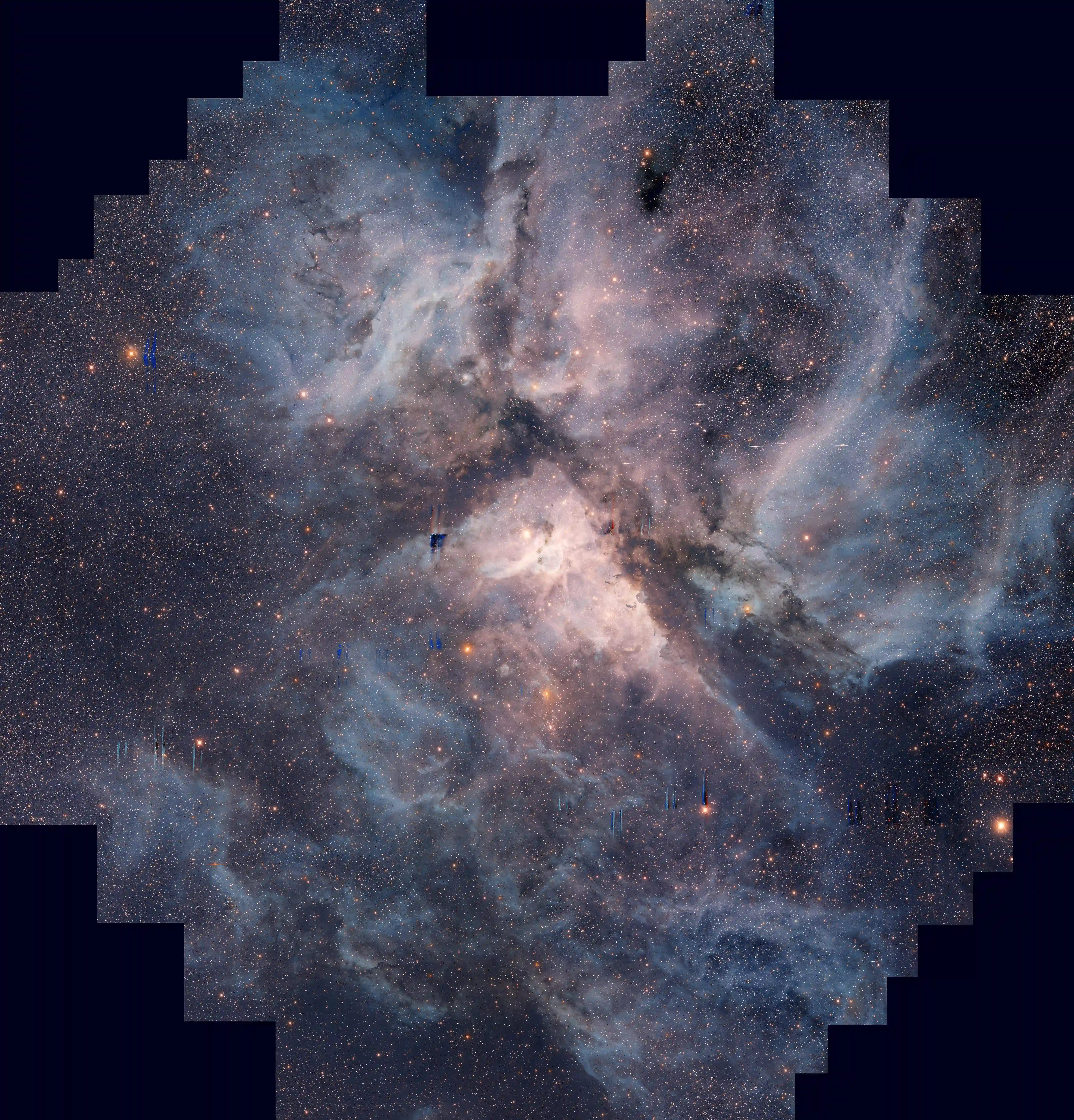
Carina Complex
Creating this image was the best part of my undergraduate thesis, titled Young Stellar Objects in the Carina Complex. There are better images of Carina, but I pushed the bits to make this one. The project's aim was to as many young star candidates in the Carina Complex. These objects are likely to be both periodic in visual bands and x-ray emitters. About 1 million objects identified, and roughly 5000 were both periodically varying in visual bands and x-ray emitters.
Carina is a massive star formation region 2.3 kp away in the Sagittarius Carina arm. The 5 main clusters that make up the Complex have been aged between .1 and 3 Myr. It offers the densest stellar complex with ongoing star formation within a few kiloparsecs of the Sun and has relatively little obscuration. Carina contains at least 65 confirmed O-type stars providing significant UV radiation that powers the processes creating Carina’s various pillars and complex structures. These bright massive O stars are on the path to supernovae on short timescales relative to typical stellar evolution, and there are clues suggesting a supernova has already occurred. In the midst of this highly active and radiative region, though predominantly in the periphery of the main clusters, there is ongoing star formation and accretion out of dense molecular cloud. Overall then, Carina is a superb candidate for star forming observations because of its past and present star forming activity, vast extent, and excellent observability.
Wilson Cauley, a former graduate student for my advisor (Patrick Hartigan) made optical observations of the Carina Complex in March 2013 over the course of 4 nights using DECam, the world’s largest imager at the time with 520 megapixels, mounted to a 4-meter telescope for a 3.0 deg2 FOV. Cauley captured over 500 frames in I and R filters, as R magnitudes will show the most variability in young stars and concurrent I magnitude time-series can help with object differentiation. The image is the full stack of all 500 frames.